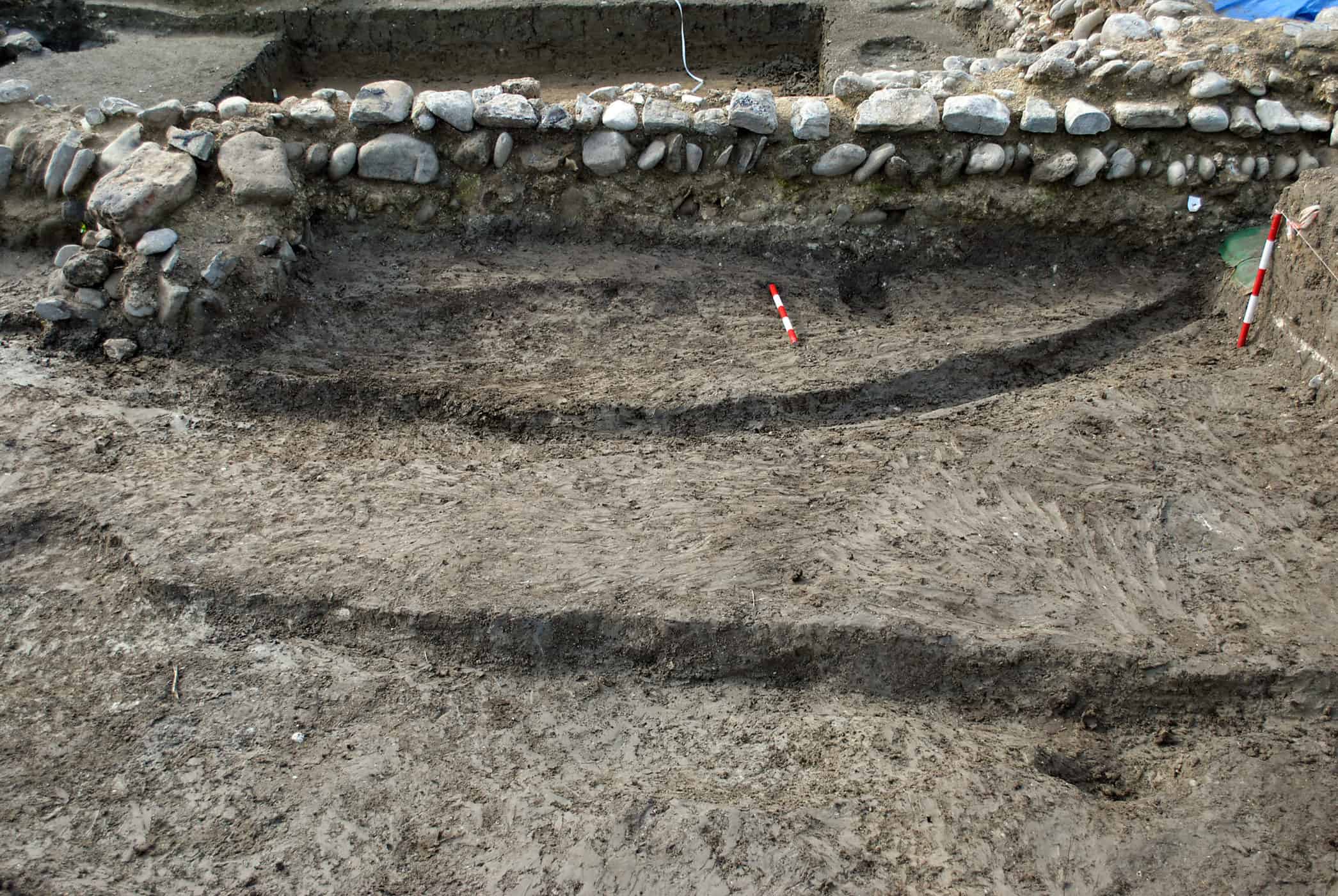Stone Age to Iron Age 4: round house
The shallow curved ditches and post holes are evidence of an Iron Age roundhouse.
The wood and thatch they were made of are gone, but the ditches are still there.
The buildings below have been made recently, using the same materials and techniques.
This is what an Iron Age village looked like. This is a reconstructed view of 'belgic' Canterbury. The original is on display in Canterbury Museum:
Images: Ditch of roundhouse and reconstructed roundhouse: Copyright Canterbury Archaeological Trust. Artist's impression of Iron Age Canterbury: Copyright Canterbury City Museums
Did you know the walls of Iron Age round houses were made from wattle and daub?
Wattle panels were made by interweaving thin, pliable branches of wood, which were fixed around the outside of the roundhouse between strong upright posts.
Sloppy daub was mixed from mud, animal dung and straw and ‘daubed’ over the wattle by hand to provide a waterproof covering inside and out.
A bit smelly perhaps, but it kept the roundhouse warm in winter and cool in summer!



